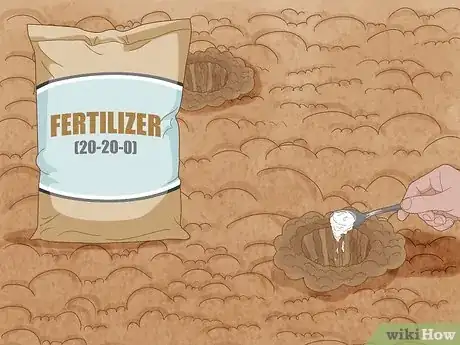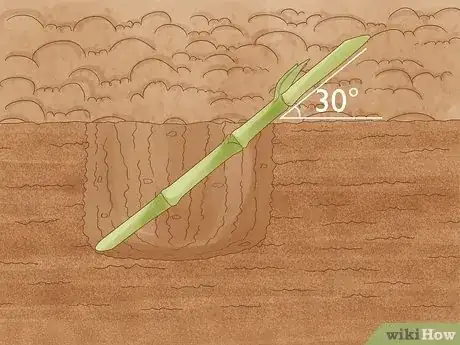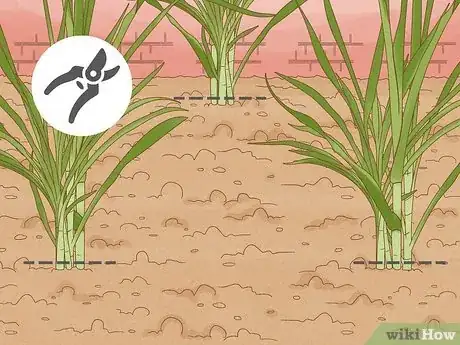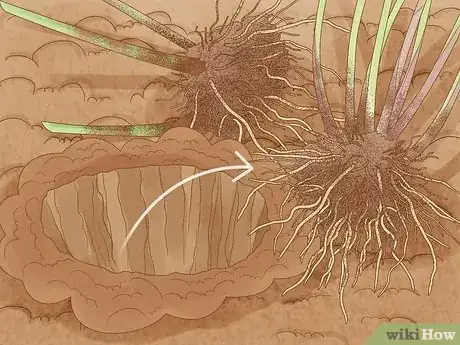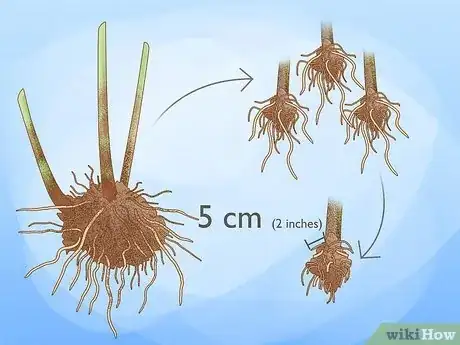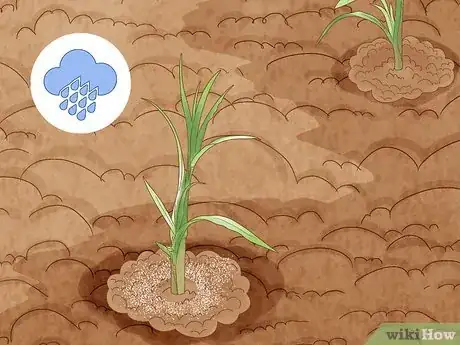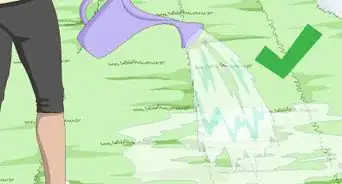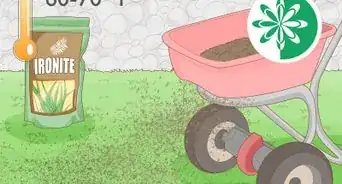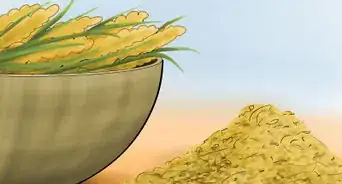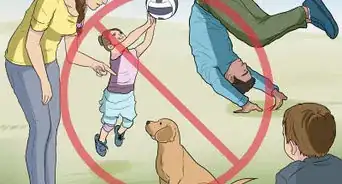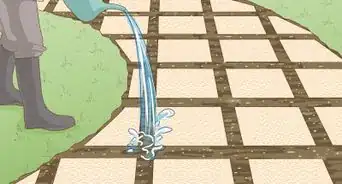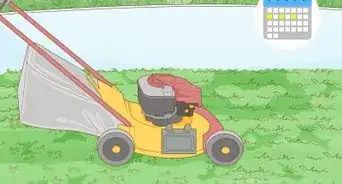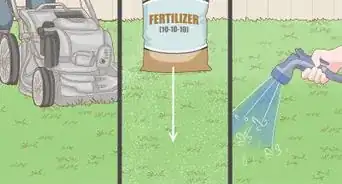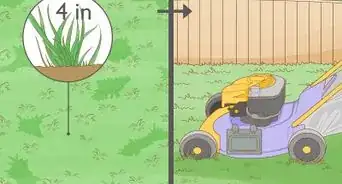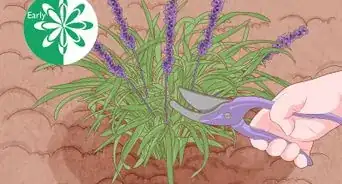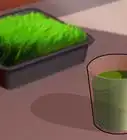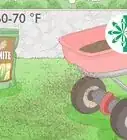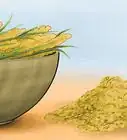This article was co-authored by Lauren Kurtz and by wikiHow staff writer, Megaera Lorenz, PhD. Lauren Kurtz is a Naturalist and Horticultural Specialist. Lauren has worked for Aurora, Colorado managing the Water-Wise Garden at Aurora Municipal Center for the Water Conservation Department. She earned a BA in Environmental and Sustainability Studies from Western Michigan University in 2014.
There are 7 references cited in this article, which can be found at the bottom of the page.
This article has been viewed 49,373 times.
Napier grass, also known as elephant grass, Uganda grass, or pennisetum purpureum, is a tropical grass native to Africa. It is popular as a feed crop for livestock, and is also useful for attracting pest insects away from important food crops, such as maize.[1] In the US, it is sometimes used as an ornamental plant.[2] Napier grass can be propagated from cuttings or from root slips. Once your grass is planted, weed it regularly and make sure it gets plenty of water.
Steps
Planting Napier Grass Cuttings
-
1Cut a mature stem of Napier grass. If Napier grass does not grow wild in your area, you may be able to buy some from a plant nursery or catalogue. Cut the stem around 15-20 cm (6-8 inches) above the soil. Look for stems that have at least three nodes, which are small bumps that will eventually grow into new leaves.[3]
-
2Cut the stem into sections with three nodes each. Examine the length of the stem for leaf nodes. These will look like small, green bumps along the length of the stem. Each section that you cut should have at least three nodes on it. Use a sharp knife, and make each cut at a roughly 45° angle. If you wish, you can retain the top part of the stem to use as livestock feed or compost.[4]Advertisement
-
3Dig a series of holes approximately 60-75 cm (24-30 inches) apart. The holes should be deep enough so that two of the three nodes on your cuttings will be underneath the soil when you plant them.[5]
- If you wish to plant multiple rows of Napier grass, the space between each row should be roughly equal to (or slightly greater than) the space between each plant.
-
4Add fertilizer to the holes. Before planting your cuttings, add a little fertilizer to each hole. You can use 1 teaspoon (5 ml) of triple superphosphate fertilizer, a few handfuls of farmyard manure, or a fertilizer with a 20-20-0 NPK ratio.[6]
- An NPK ratio tells you what percentage nitrogen, phosphorus, and potassium are in the fertilizer. A 20-20-0 has 20% nitrogen, 20% phosphorus, and no potassium.
-
5Plant the canes in the holes and fill in the holes with soil. Once you have added the fertilizer, put a cane in each hole at a 30° angle. Fill the hole with soil, making sure that two of the leaf nodes are below the soil and one is above the soil.[7]
Growing Napier Grass from Root Slips
-
1Cut off an entire stem of Napier grass. Cut the stem at ground level. Remove all of the green parts of the plant, leaving only the portion that is under the soil. Discard the stem and leaves, or use them for compost or animal feed.[8]
-
2Dig up the roots and shoots. Once you've cut off the stem, dig under the soil and get the bundle of roots and shoots. Separate the clump of roots into separate “slips,” consisting of a living root with one or more grass shoots emerging from it.[9]
-
3
-
4Plant the root slips in small holes. Dig a row of shallow holes 60-75 cm (24-30 inches) apart. Each hole should be deep enough to submerge the root, while the shoot is left above the ground. When you are done planting the root slips, fill in the holes with soil.[12]
Caring for Your Napier Grass
-
1Weed your grass regularly. Napier grass crops need to be weeded frequently, especially if you are growing the grass as feed for livestock. Weed the crop for the first time three weeks after planting, and weed it three or four more times before harvesting the grass. Napier grass is typically ready for harvest after about eight weeks of growth.[13]
-
2
-
3Make sure your grass gets plenty of water. Napier grass grows best in areas with heavy rainfall. If you don't get a lot of rain in your area, you may need to water your grass occasionally to avoid stunting. However, it is also important not to let your grass get waterlogged. Make sure to plant in an area with good soil drainage.[16]
Community Q&A
-
QuestionWhat is the estimated height of Napier grass when it is planted one month already?
 NinoxTop AnswererIt should be about 30 cm (1 ft) high after one month. The plant will then grow at constant speed until reaching 2 to 4 m after one year.
NinoxTop AnswererIt should be about 30 cm (1 ft) high after one month. The plant will then grow at constant speed until reaching 2 to 4 m after one year.
References
- ↑ http://www.push-pull.net/farmers_guide_2012.pdf
- ↑ http://www.gpnmag.com/article/crop-culture-report-pennisetum-first-knight/
- ↑ https://www.jica.go.jp/project/vietnam/0601775/pdf/technical_materials/feeding_and_management/Feeding_and_Management04.pdf
- ↑ https://www.jica.go.jp/project/vietnam/0601775/pdf/technical_materials/feeding_and_management/Feeding_and_Management04.pdf
- ↑ https://farmbizafrica.com/profit-boosters/the-abcs-of-napier-grass-cultivation-and-management
- ↑ http://www.push-pull.net/farmers_guide_2012.pdf
- ↑ https://farmbizafrica.com/profit-boosters/the-abcs-of-napier-grass-cultivation-and-management
- ↑ https://farmbizafrica.com/profit-boosters/the-abcs-of-napier-grass-cultivation-and-management
- ↑ https://farmbizafrica.com/profit-boosters/the-abcs-of-napier-grass-cultivation-and-management
- ↑ https://farmbizafrica.com/profit-boosters/the-abcs-of-napier-grass-cultivation-and-management
- ↑ http://www.vetiver.org/TVN-Handbook%20series/TVN-series1-2-vetiver-propagation.htm#splitting
- ↑ https://farmbizafrica.com/profit-boosters/the-abcs-of-napier-grass-cultivation-and-management
- ↑ https://farmbizafrica.com/profit-boosters/the-abcs-of-napier-grass-cultivation-and-management
- ↑ https://thekebun.wordpress.com/2008/06/15/planting-napier-grass/
- ↑ https://farmbizafrica.com/profit-boosters/the-abcs-of-napier-grass-cultivation-and-management
- ↑ https://thekebun.wordpress.com/2008/06/15/planting-napier-grass/



